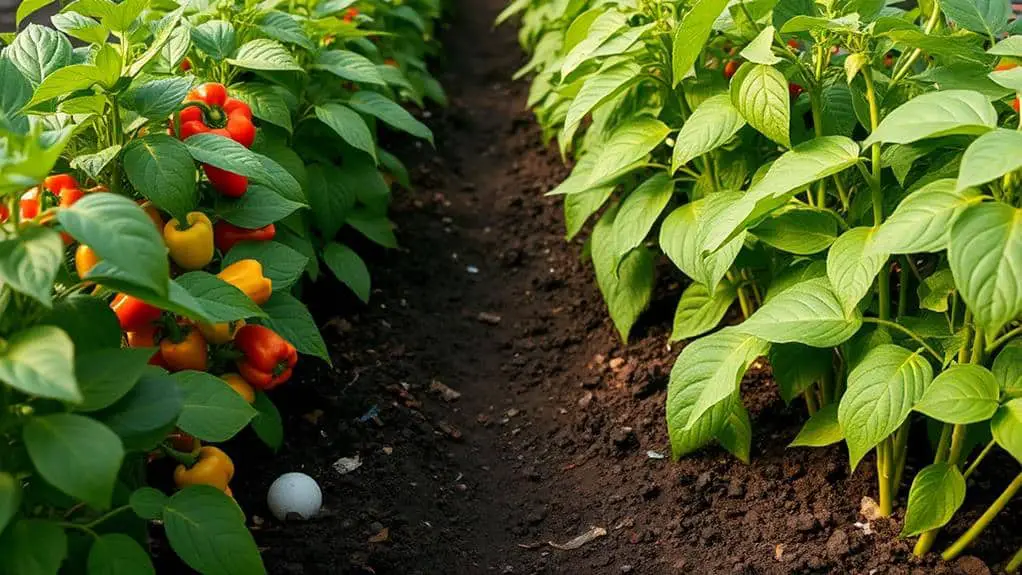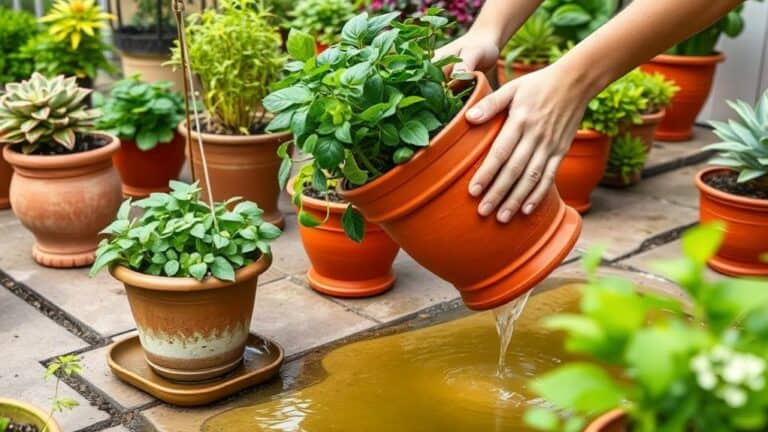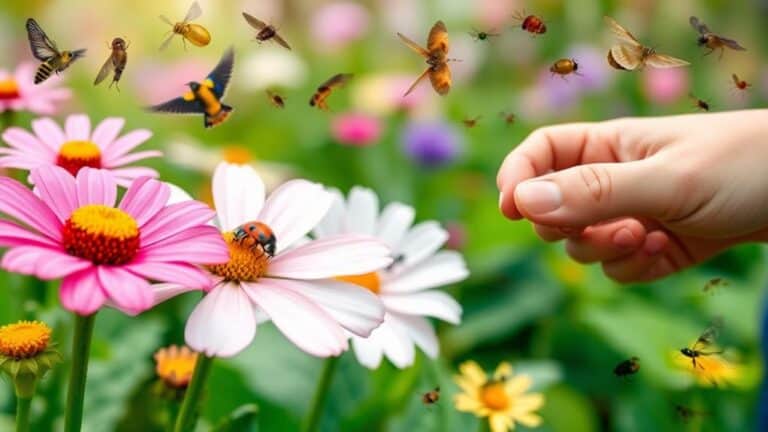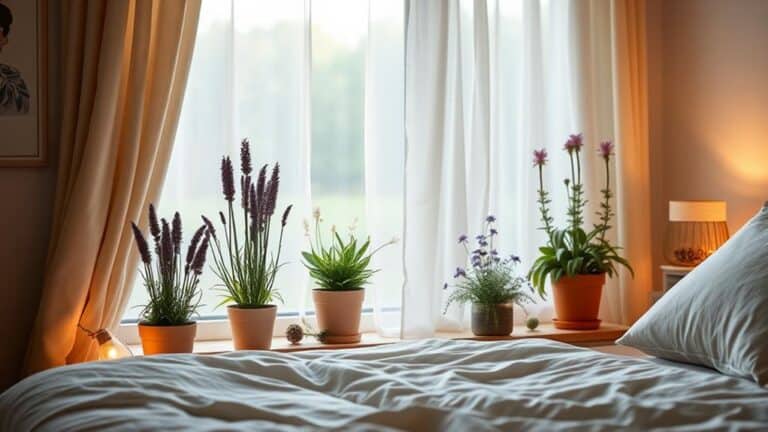Stop Planting Peppers And Beans Near Each Other
You've probably considered the benefits of companion planting, but have you ever thought about the drawbacks? When you plant peppers and beans near each other, their conflicting nutritional needs can cause more harm than good. Beans love nitrogen-rich soil, but peppers don't—they actually struggle in such conditions. Plus, the tall growth of bean plants can overshadow your peppers, depriving them of essential sunlight. So, why risk stunted growth and reduced yields? There's a lot more to uncover about optimizing your garden's layout and ensuring every plant thrives.
Nutritional Needs of Peppers
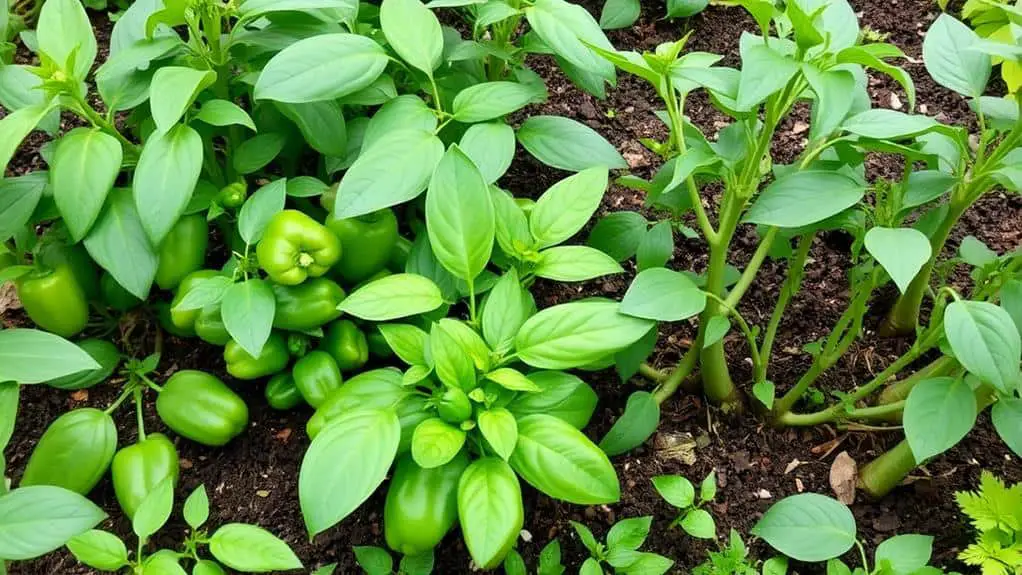
When it comes to the nutritional needs of peppers, understanding their unique requirements is vital for a successful harvest. Peppers thrive best in soil with low nitrogen levels. Too much nitrogen can actually hinder their growth and fruit production. You should aim for nitrogen levels around 100-150 pounds per acre. Beyond this, yields can decline, as research from Purdue University shows.
In addition to managing nitrogen, peppers prefer higher levels of potassium and phosphorus. Balancing these nutrients is essential.
Nutritional Needs of Beans
Understanding the nutritional needs of beans is essential if you want to maximize their growth and yield. Beans thrive in nitrogen-rich soil because they can fix atmospheric nitrogen into a usable form through their relationship with rhizobia bacteria. This high nitrogen requirement means beans can greatly alter soil nutrient balance.
Unfortunately, planting beans and peppers together isn't a good idea. While beans love nitrogen, peppers don't need as much and can suffer from excess nitrogen. To avoid this, plant beans with crops that also benefit from high nitrogen levels.
Always be cautious with companion planting; beans' nitrogen-fixing can negatively impact plants like peppers that prefer less nutrient-dense conditions. This way, you'll guarantee both plants thrive.
Nitrogen's Effect on Peppers

When you plant beans and peppers together, the excess nitrogen from the beans can seriously impact your pepper plants.
Peppers need just the right amount of nitrogen, around 100-150 pounds per acre, to grow and produce fruit properly.
Too much nitrogen can cut your pepper yields in half, so it's best to keep these plants apart to guarantee healthy growth and plentiful harvests.
Excess Nitrogen Impact
Excess nitrogen from bean plants can seriously harm your pepper plants, stunting their growth and slashing yields.
Peppers thrive with low nitrogen levels, ideally between 100-150 pounds per acre, according to Purdue University. When beans, which fix nitrogen in the soil, are planted nearby, they can create an environment that's too nitrogen-rich for peppers.
Research from the University of Illinois shows that this can cut your pepper yield by 50%. High nitrogen levels make it tough for peppers to develop properly, causing poor growth.
This doesn't just affect peppers. Other garden plants like tomatoes can also suffer.
To keep your garden productive, avoid planting beans and peppers together. Make sure your peppers get the balanced nutrients they need.
Reduced Fruit Production
While beans can be a great addition to your garden, they can spell trouble for your pepper plants due to their nitrogen-fixing abilities. This extra nitrogen can cause reduced fruit production in peppers.
A University of Illinois study showed a 50% drop in pepper yield when grown near beans. Peppers prefer low nitrogen levels, while beans add too much nitrogen to the soil, leading to:
- Stunted growth
- Fewer fruits
- Lower overall yield
Both sweet and hot peppers suffer from this imbalance. Excess nitrogen from beans makes it hard for peppers to produce fruit effectively.
Optimal Nitrogen Levels
Understanding the delicate balance of nitrogen levels is key to maximizing your pepper harvest. Peppers thrive best with low nitrogen in the soil, ideally around 100-150 pounds per acre, according to Purdue University.
Too much nitrogen can actually reduce your pepper yield by up to 50%, as shown in research by the University of Illinois. High nitrogen levels can stunt growth and inhibit fruit production.
Beans, which fix atmospheric nitrogen, can introduce excess nitrogen into the soil, harming your peppers. That's why it's crucial to monitor soil nutrient levels.
Peppers are sensitive and can't handle competition for nitrogen like beans can. Keep these factors in mind to guarantee your peppers grow strong and produce bountifully.
Companion Planting Basics
Companion planting helps you grow a healthy garden by placing plants together that support each other's growth, but you need to be careful with their nutrient needs, growth habits, and pest dynamics.
For instance, beans fix a lot of nitrogen in the soil, which isn't great for peppers since they prefer lower nitrogen levels.
Also, beans' vigorous growth can overshadow peppers, leading to stunted growth and fewer fruits, so it's best to keep them at least 3-4 feet apart.
Nutrient Needs Compatibility
To guarantee your garden flourishes, it's crucial to understand the nutrient needs compatibility of the plants you choose to grow together.
When considering companion plants, keep in mind that beans and peppers aren't ideal neighbors. Here's why:
- Beans need high nitrogen, while peppers prefer low nitrogen.
- Excess nitrogen from beans can stunt pepper growth and reduce fruit yield.
- Peppers thrive with potassium and phosphorus, which beans might disrupt.
A Purdue University study revealed a 50% yield reduction in peppers when grown too close to beans.
To avoid this, it's best to plant these two at least 3-4 feet apart.
Understanding these nutrient needs will help create a balanced and productive garden.
Happy planting!
Growth Habits Interaction
When it comes to companion planting, the growth habits of peppers and beans can clash, making them poor garden neighbors. Pepper plants thrive in low nitrogen environments, but beans release excess nitrogen, which can reduce pepper yield by up to 50%. Additionally, bush beans can overshadow smaller pepper plants, blocking sunlight and hogging water. This competition stunts growth and reduces yields.
| Pepper Plants | Bean Plants | Effect |
|---|---|---|
| Low nitrogen | High nitrogen | Inhibits growth |
| Smaller size | Bushy size | Blocks sunlight |
| Needs space | Spreads out | Competes for resources |
To guarantee both plants flourish, keep them at least 3-4 feet apart. This minimizes competition and lets each plant grow healthier and stronger.
Pest and Disease Dynamics
While the growth habits of peppers and beans already pose challenges, their pest and disease dynamics make matters worse.
Peppers and beans attract similar pests, like aphids and spider mites, which increases pest pressure when they're grown together.
Additionally, diseases such as Pythium wilt can easily spread between the two crops, causing significant damage.
To summarize:
- Increased pest pressure: Shared pests like aphids and spider mites.
- Disease spread: Pathogens like Pythium wilt can affect both plants.
- Nutrient competition: Weakens plants, making them more vulnerable to pests and diseases.
Ineffective Plant Pairings
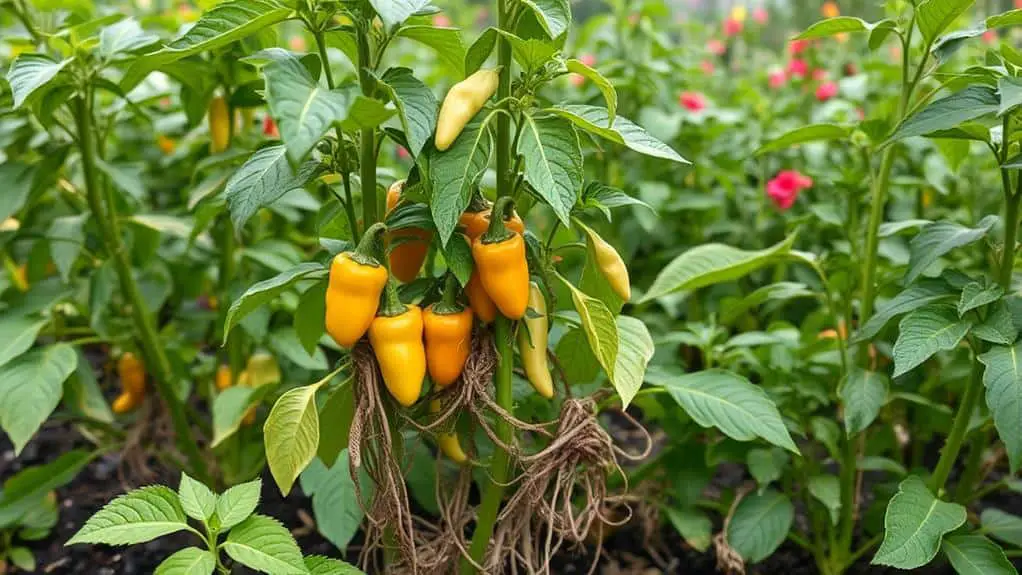
Planting peppers and beans together is a classic example of ineffective plant pairings. Beans thrive in high nitrogen soil, while peppers need less nitrogen to produce fruit effectively. When grown together, beans can cause a 50% reduction in pepper yield due to excess nitrogen.
| Issue | Impact on Peppers | Gardener's Emotion |
|---|---|---|
| High Nitrogen | Reduced fruit production | Frustration |
| Nutrient Competition | Stunted growth | Disappointment |
| Shading | Poor sunlight exposure | Concern |
| Close Proximity | Increased resource competition | Annoyance |
To avoid these issues, keep peppers and beans at least 3-4 feet apart. This simple change can dramatically improve your harvest and make your gardening experience much more rewarding.
Alternative Plant Neighbors
Instead of planting peppers next to beans, try pairing them with tomatoes, which share similar nutrient needs and can boost your garden's yield.
Carrots are another great choice, as they help improve the soil structure for both plants.
Herbs like basil, parsley, and marjoram can also be great companions, deterring pests and promoting healthy growth.
Herbs as Pepper Companions
Companionship in the garden can make a world of difference for your pepper plants, especially when you introduce herbs like basil, parsley, and marjoram.
These herbs not only enhance the growth and flavor of your peppers but also help deter pests and attract beneficial insects. Basil, for instance, is renowned for improving pepper growth and taste.
Consider planting these herbs alongside your pepper plants:
- Basil: Boosts growth and flavor.
- Parsley: Repels pests and attracts pollinators.
- Marjoram: Enhances overall plant health.
Adding these herbs to your garden creates a more biodiverse environment, leading to healthier plants and fewer pest problems.
They're easy to grow and will make your garden thrive. Give it a try, and you'll see the difference!
Ideal Root Vegetables
When it comes to choosing the best plant neighbors for your peppers, you can't go wrong with root vegetables like carrots, beets, and radishes. These plants thrive in similar conditions and don't compete for nutrients, making them perfect companions. Carrots grow well without hindering peppers, while beets utilize space efficiently with their unique root structure. Radishes, on the other hand, help break up soil, improving air flow for healthier plants. Turnips and parsnips are also excellent choices as they prefer similar light and soil conditions, ensuring your garden remains balanced and thriving.
| Root Vegetable | Benefit to Peppers |
|---|---|
| Carrots | No nutrient competition |
| Beets | Effective space utilization |
| Radishes | Improved soil aeration |
| Turnips | Compatible soil conditions |
Compatible Fruits and Veggies
Choosing compatible fruits and veggies for your peppers can make a significant difference in your garden's health and productivity.
Companion planting is key to achieving this balance. Some great neighbors for peppers include:
- Tomatoes: They share similar nutrient needs and won't compete like beans do.
- Carrots: They improve soil structure and thrive alongside peppers.
- Basil and Marjoram: These herbs enhance flavor and attract beneficial insects while deterring pests.
Okra is also an excellent choice, offering mutual benefits without nutrient competition.
By choosing these compatible plants, you'll create a thriving garden environment.
Remember, companion planting helps maximize growth and keeps your garden healthy.
Gardening Best Practices
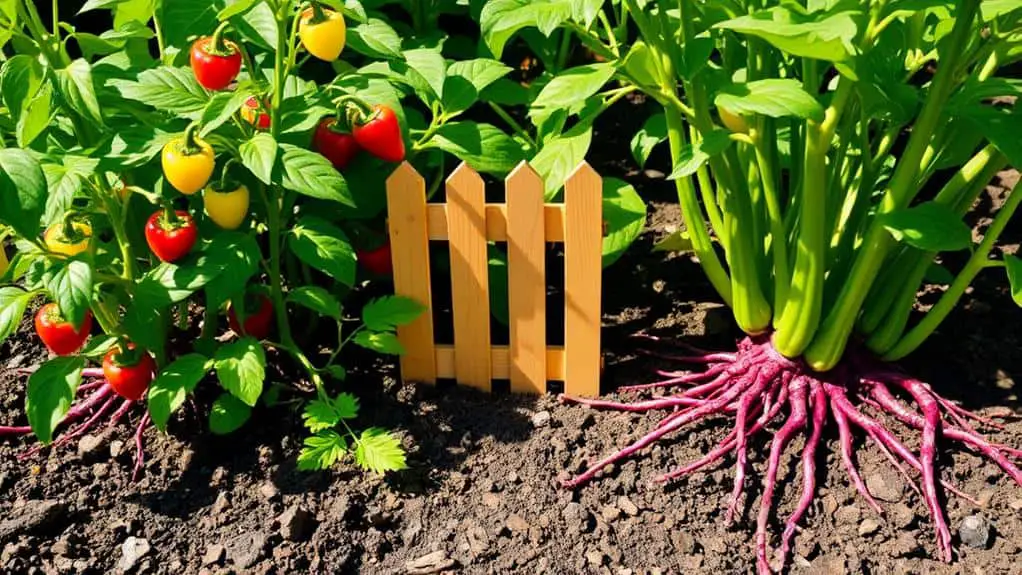
Gardening best practices emphasize the importance of understanding the specific needs of each plant to achieve a thriving garden.
You'll want to choose the right companions for your plants. For instance, peppers thrive with low nitrogen, while beans need high nitrogen. Planting them together can stunt pepper growth. Instead, pair peppers with companions like tomatoes, carrots, and herbs.
To optimize your garden's health, keep beans and peppers 3-4 feet apart. This spacing allows better air circulation and reduces disease risk.
Regularly monitor your plants and adjust your strategies based on what you see. This proactive approach guarantees each plant gets the nutrients it needs, leading to a more productive and healthy garden.
Happy gardening!
Plant Competition Issues
Understanding plant competition issues is essential for a thriving garden. Peppers and beans, when planted too close, end up competing for nutrients, leading to several problems.
Beans need a lot of nitrogen, which can stunt your peppers and cut their yield by 50%, as shown in a University of Illinois study.
Consider these issues:
- High nitrogen levels from beans can starve peppers.
- Beans' vigorous growth can overshadow and strangle peppers.
- Peppers are more sensitive to nutrient competition and shading.
Community Gardening Insights
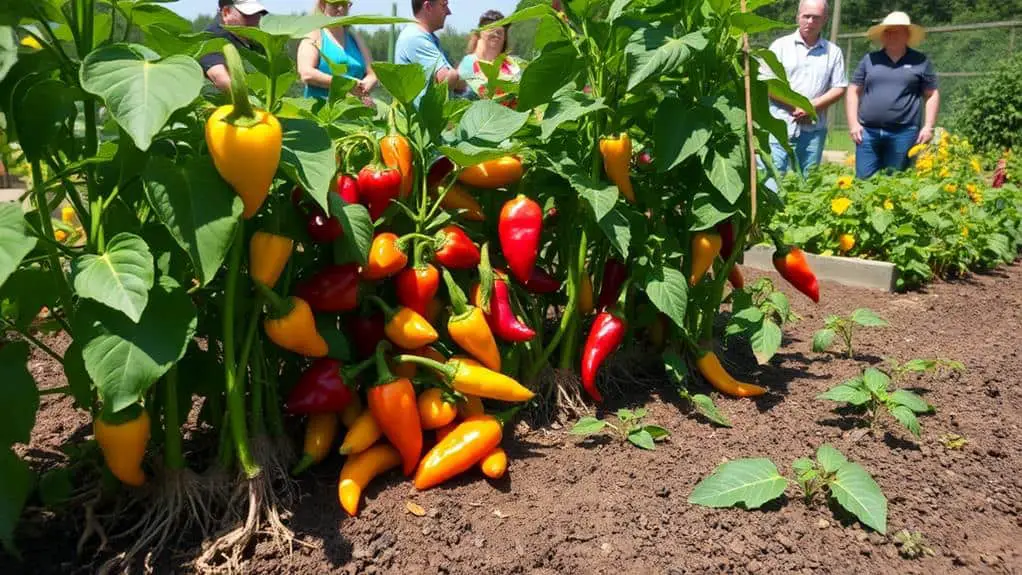
When planning your garden, it's important to heed the experiences of fellow community gardeners. Many have found that planting peppers near beans can stunt the peppers' growth and reduce their fruit yield.
Beans fix nitrogen in the soil, which peppers are sensitive to. Too much nitrogen can decrease pepper yields by up to 50%, as shown in a Purdue University study.
To maximize productivity, gardeners often suggest pairing peppers with tomatoes or basil instead of beans. Observations show that peppers thrive better away from beans, facing less nutrient competition.
Separating heavy-yielding vegetables like beans from smaller plants like peppers prevents overshadowing and guarantees healthier crops.
Strategic Plant Spacing
Strategic plant spacing is essential for a successful garden, especially when growing peppers and beans. To minimize competition for resources, you should plant them at least 3-4 feet apart.
This spacing guarantees both plants get enough nutrients and sunlight. Proper spacing also enhances air circulation, reducing the risk of disease and promoting healthy growth.
- Adequate sunlight: Bush beans can overshadow peppers, so space them carefully.
- Soil nutrients: Beans add nitrogen to the soil, which can inhibit pepper growth if too close.
- Adjusting distances: Observe and adjust plant spacing to optimize yield and health.
Frequently Asked Questions
Can You Plant Peppers and Beans Next to Each Other?
You shouldn't plant peppers and beans next to each other due to their differing nutrient needs. Companion planting guidelines suggest separating them by at least 3-4 feet to avoid competition and guarantee healthier growth for both plants.
What to Avoid Planting Near Peppers?
Don't plant peppers near beans, tomatoes, brassicas, or fennel. These plants can hinder your peppers' growth due to competition for nutrients and allelopathy. For successful companion planting, keep them at least 3-4 feet apart.
What Not to Plant Next to Beans?
You shouldn't plant brassicas, onions, garlic, carrots, or fennel next to beans. These plants can disrupt nutrient balance and stunt growth. Use crop rotation to avoid nutrient depletion and keep your garden thriving.
What Veggies Not to Plant Near Each Other?
When practicing companion planting, don't plant tomatoes, brassicas, onions, garlic, or fennel near peppers. These combinations can lead to nutrient competition, growth inhibition, and reduced yields. Proper planning guarantees your garden thrives without these conflicts.
Conclusion
To keep your garden thriving, remember not to plant peppers and beans close to each other. Peppers need low nitrogen, while beans love nitrogen-rich soil. When you space them 3-4 feet apart and choose compatible companions, your plants will grow healthier and produce more. With these tips, you're on your way to a successful and bountiful garden. Keep experimenting and learning—your garden will thank you! You've got this!

